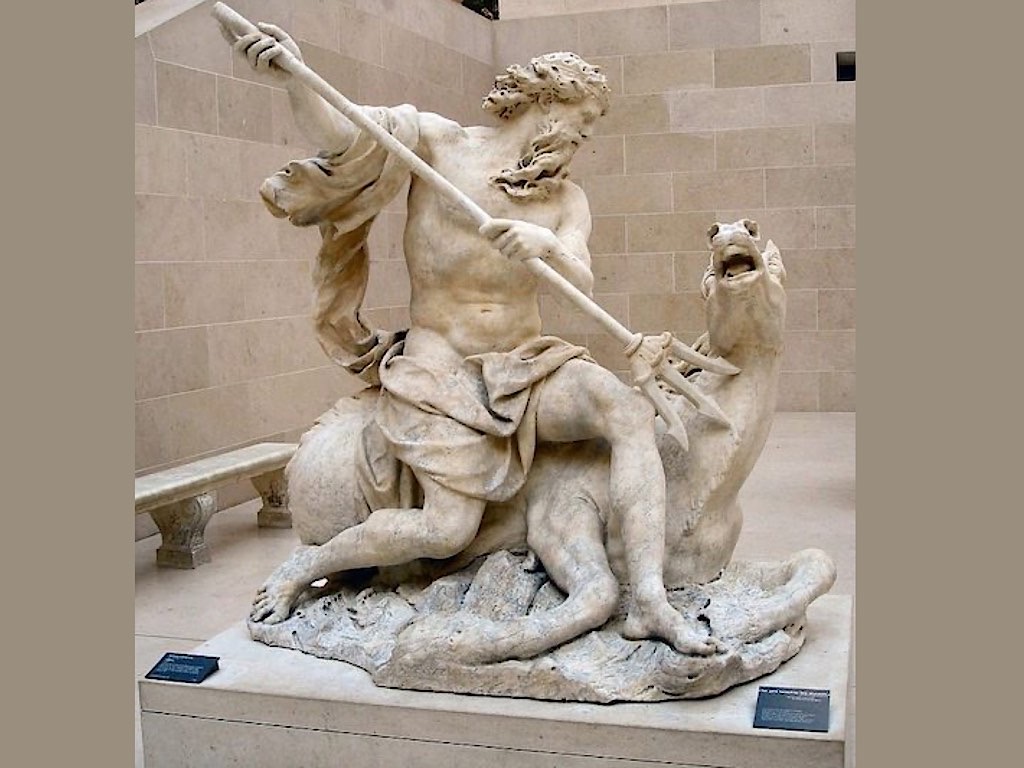This is another in my series on the Louvre, trying to break it up into manageable pieces. Antoine Coysevox was a distinguished French sculptor (1640-1720) who belonged to a family originally from Spain. At the age of seventeen he executed a much admired Madonna. In 1671 he was employed by Louis XIV on various sculptures at Versailles and at Marly. Marly was a small Palace built in 1679 for Louis XIV primarily as a hydraulic station for the fountains at Versailles, dismantled in 1800. The work pictured above is “Neptune” from Marly now at the Louvre in the Richelieu wing. Coysevox made two bronze statues of Louis XIV, the “Charlemagne” at Saint-Louis des Invalides, and other famous works, but his most famous is probably “La Renommée” at the entrance of the Tuileries — two winged horses bearing Mercury and Fame. Napoleon is said to have delighted in the sculptor’s fancy that the horse of Mercury should have a bridle, but not that of Fame. Coysevox also produced some fine sepulchral monuments for the churches of Paris. We owe him a special debt for his contemporary portraits.
As the king’s official portrait sculptor, Coysevox showed a mastery of sculpture comparable to Girardon, his rival. He produced numerous busts for the king and the court, a genre which produced remarkably successful pieces in the 18th century. All attest to his profound sense of psychology and resemblance. This subtlety won him commissions for numerous funerary monuments, of which the most famous are those of Mazarin in the Institut de France and of Colbert in Saint-Eustache church (seen above). The artist worked constantly until the end of his life. He terminated his gifted career with a final masterpiece: the Louis XIV at Prayer in the choir of Notre-Dame.



